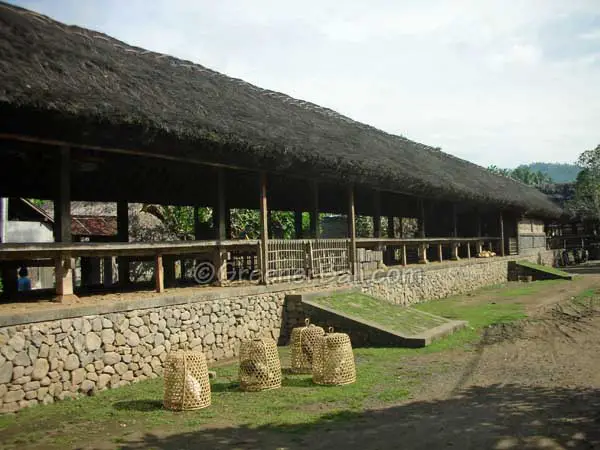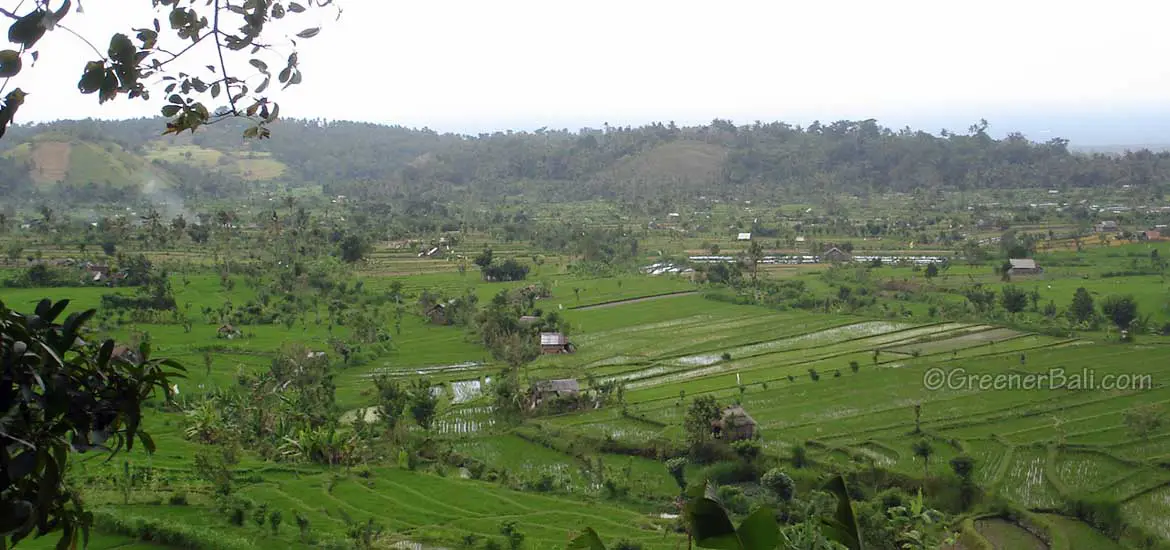Most of Bali’s inhabitants today are descendants from those who fled Java island when Islam was introduced. The Bali Aga people are those who didn’t fall under the rule of post-Majapahit kings and their Hindu-Javanese court culture. Therefore they are seen as the original inhabitants of Bali island.
Their religion comes from the Indra sect in India and unlike the rest of Bali, they are casteless. They have a council of elders ranked by seniority instead of elected representatives.

There aren’t many Bali Aga villages on the island. Those which are still existing today are tucked away in forests, mountains or on scenic locations in East Bali, especially on the stretch between the coconut village of Candidasa and the capital of the Karangasem Regency, Amlapura.
Of these villages Tenganan near Candidasa is most open to foreigners. Trunyan located on the edge of the Batur crater is on the other hand one of the isolated places on the island.
Village layout
The roads in most Aga villages run in a straight line from mountain to the sea while the small alleys run from east to west. Within one village there might be several banjar operational.
In the centre of every Aga village there is a big open building called the ‘bale agung’. This building is sacred and the village council comes here to talk about the most important affairs.

Sacred Dances and Instruments
You’ll also find other pavilions in an Aga village where villagers come together to perform certain rituals such as the Rejang Dance or playing the Gamelan Gambang.
The Rejang Dance is one of Bali’s most sacred dances. This dance is performed only in the inner courtyard of the temple. Its derivative is called the ‘penyembrahma’ dance. It is the opening dance for tourists which you can see at the Budaya Arts Center in Denpasar.
Just like their dances their instruments are also sacred to varying degrees. For instance at the village of Asak, southeast of Tenganan, the Gamelan Gambang instrument plays an important role in their rituals. This Gamalan is composed of four wooden keyed xylophones played with Y-shaped mallets in each hand and there is a pair of seven-keyed bronze xylophones to carry the melody.

Ceremonies
The Bali Aga do not have the same ceremonies as the other Balinese on the island. Nyepi, Galungan, Caka New Year and Ngaben are not part of their rituals. They don’t cremate their dead. They bring them to the cemetery after the sun has reached its highest point. Here they undress the dead and bury the corpse facing the sun.
However the Aga at Trunyan don’t cremate their dead, nor bury their dead. They bring them to a special spot outside the village. Here they place them in bamboo cages and leave them to the elements.
If you like to have a look at the structure of Bali Aga villages you can go to Taro (famous for their albino cattle), Bug Bug, Bebandem, Asak, Bungaya, Timbrah, Penglipuran (famous for their bamboo skills), Tenganan (famous for their double weaved dyed ikat cloths) or Batur (famous for their directional temple and volcanic lake).

